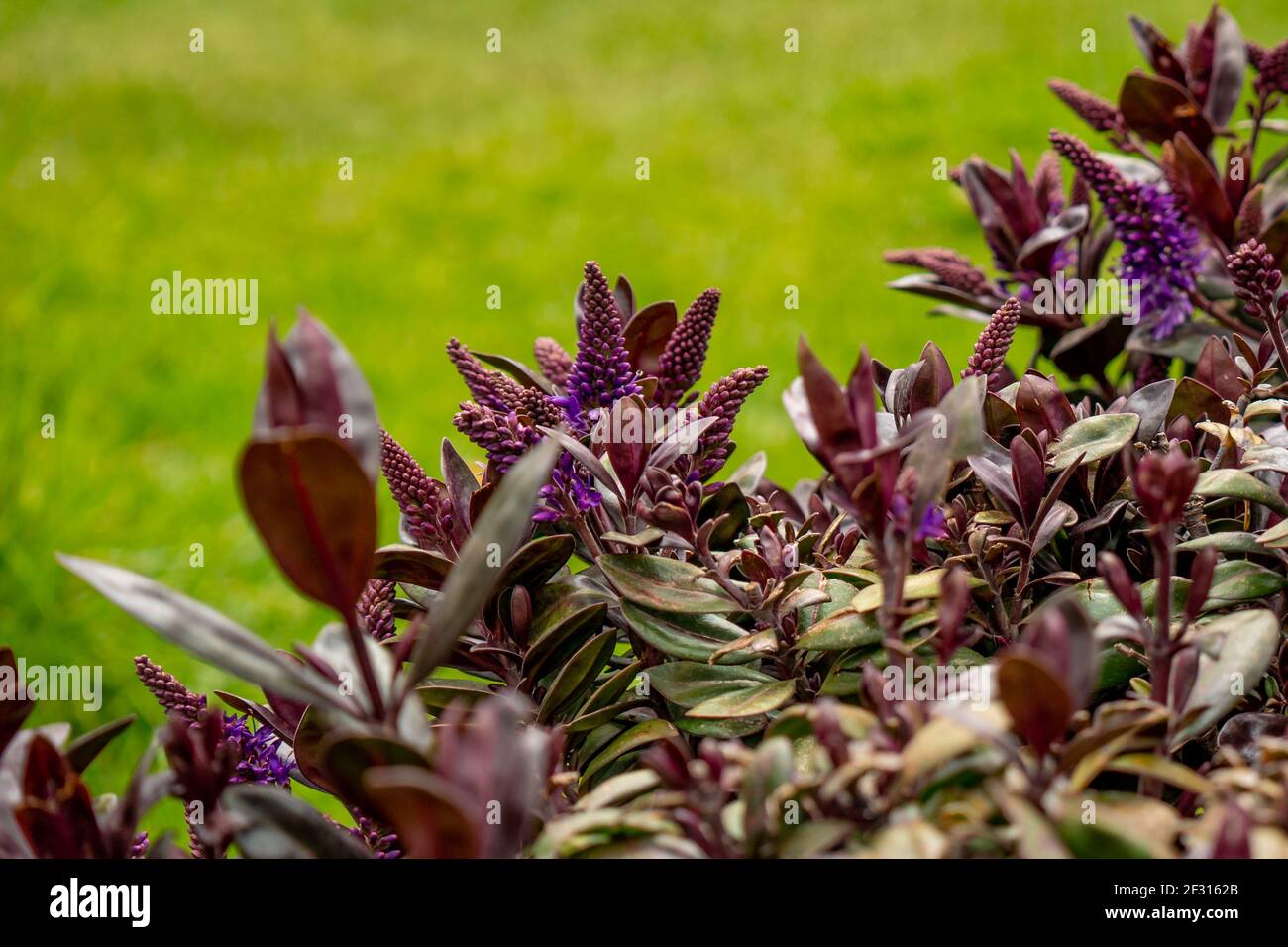The New Zealand hebe plant, a captivating species known for its versatility and charm, offers a myriad of possibilities in the realm of landscaping. With its diverse foliage, vibrant flowers, and adaptability to various growing conditions, the hebe plant stands out as a true gem among ornamental shrubs.
From its origins in the rugged landscapes of New Zealand to its widespread cultivation around the globe, the hebe plant has garnered admiration for its resilience and aesthetic appeal. This guide delves into the intricacies of the New Zealand hebe plant, exploring its physical characteristics, cultivation requirements, and captivating landscape uses.
Plant Description: New Zealand Hebe Plant

The New Zealand hebe is an evergreen shrub native to New Zealand. It is a member of the family Plantaginaceae, which also includes the plantains and speedwells. The New Zealand hebe is a popular garden plant due to its attractive foliage, flowers, and hardiness.
The New Zealand hebe typically grows to a height of 1-2 meters (3-6 feet). It has small, leathery leaves that are arranged in opposite pairs. The leaves are typically green, but some varieties have variegated leaves with white, cream, or yellow markings. The New Zealand hebe produces small, white or pink flowers that are arranged in clusters. The flowers are typically produced in the spring and summer.
Growth Habits
The New Zealand hebe is a relatively easy plant to grow. It prefers well-drained soil and full sun to partial shade. It is drought tolerant and can withstand periods of neglect. The New Zealand hebe can be propagated by cuttings or by seed.
Hardiness Zones
The New Zealand hebe is hardy in USDA hardiness zones 6-9. This means that it can be grown outdoors in most parts of the United States.
Cultivation and Care

New Zealand hebe plants are relatively easy to cultivate and care for, making them suitable for various gardening applications. Whether you’re a seasoned gardener or just starting, these plants can thrive with proper care.
Propagation and cultivation methods, as well as essential soil requirements, watering schedules, and fertilization needs, will be discussed to guide you in successfully growing and maintaining your New Zealand hebe plants.
Propagation
- New Zealand hebe plants can be propagated through cuttings or layering.
- For stem cuttings, select healthy, non-flowering stems in spring or early summer.
- Remove the lower leaves and dip the cutting in rooting hormone before planting it in a well-draining potting mix.
- Keep the cutting moist and provide indirect light until roots develop.
- Layering involves bending a stem down to the ground and burying a portion of it. Roots will form at the buried section, and the new plant can be separated once established.
Soil Requirements
- New Zealand hebe plants prefer well-drained, slightly acidic soil.
- A pH range between 5.5 and 6.5 is ideal.
- Sandy or loamy soil with good drainage is recommended.
- Avoid heavy clay soils that can lead to waterlogging.
Watering, New zealand hebe plant
- Water New Zealand hebe plants regularly, especially during hot and dry weather.
- Allow the soil to dry out slightly between waterings.
- Overwatering can lead to root rot.
- Mulching around the plants can help retain moisture and suppress weeds.
Fertilization
- Fertilize New Zealand hebe plants sparingly.
- A balanced liquid fertilizer diluted to half strength can be applied monthly during the growing season.
- Avoid over-fertilizing, as it can lead to excessive growth and nutrient burn.
Pruning
- Regular pruning helps maintain the shape and size of New Zealand hebe plants.
- Prune lightly in spring or early summer to remove dead or damaged stems.
- More severe pruning can be done in late winter or early spring to control size and encourage bushier growth.
- Use sharp, clean pruning shears to avoid tearing the stems.
Maintenance
- New Zealand hebe plants are generally low-maintenance.
- Regular watering, fertilizing, and pruning are key to maintaining healthy plants.
- Check for pests and diseases regularly and treat them promptly.
- Deadheading spent flowers encourages new blooms and prevents self-seeding.
Landscape Uses

New Zealand hebe plants are versatile landscaping elements, adding charm and visual interest to gardens. Their diverse forms, foliage colors, and flowering habits make them suitable for various applications.
Hebe plants thrive in hedges, creating dense, evergreen screens that provide privacy and define garden spaces. Their compact growth habit and tolerance for shearing make them ideal for formal or informal hedging. Additionally, the range of foliage colors, from deep green to variegated, allows for creative hedging designs.
Borders
Hebe plants excel as border plants, adding color, texture, and interest to garden edges. Their compact size and diverse forms, from upright to cascading, enable them to fit into various border designs. The contrasting foliage colors, including green, yellow, and purple, create a vibrant and eye-catching display.
Ground Covers
Low-growing hebe varieties, such as Hebe topiaria, are excellent ground covers, forming dense mats that suppress weeds and add a touch of color to the landscape. Their ability to thrive in both sunny and shady areas makes them suitable for a range of ground cover applications.
Companion Plants
Hebe plants complement various companion plants, enhancing the overall garden aesthetic. Some suitable companions include:
- Phormium tenax (New Zealand flax): Its sword-like foliage provides a striking contrast to the hebe’s rounded leaves.
- Cordyline australis (cabbage tree): Its architectural form and bold foliage create a dramatic backdrop for hebe plants.
- Leucadendron species (cone bushes): Their unique flower heads and silvery foliage add texture and interest to the garden.